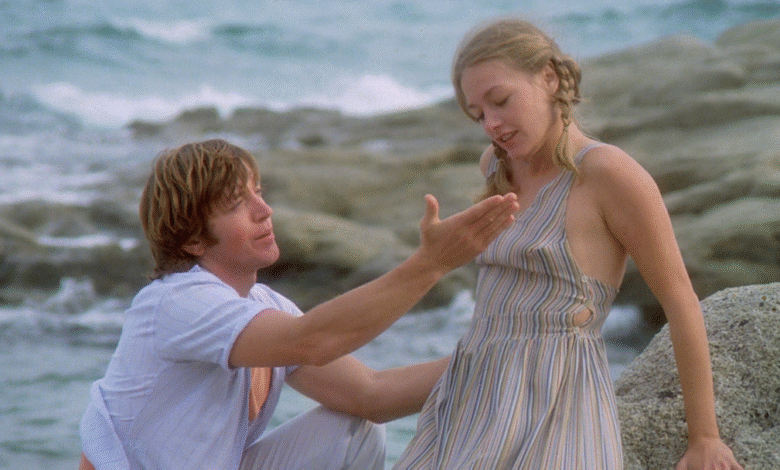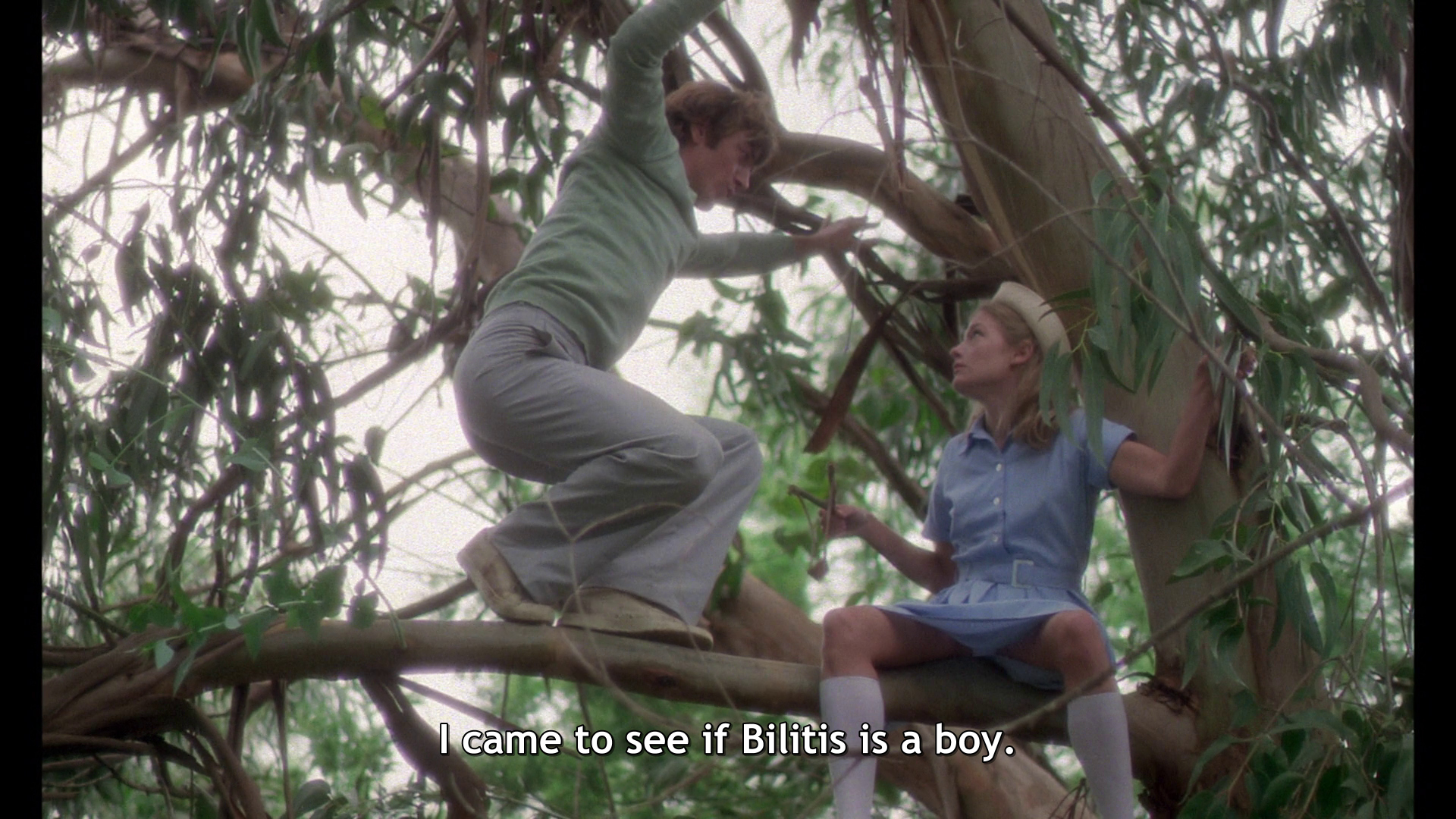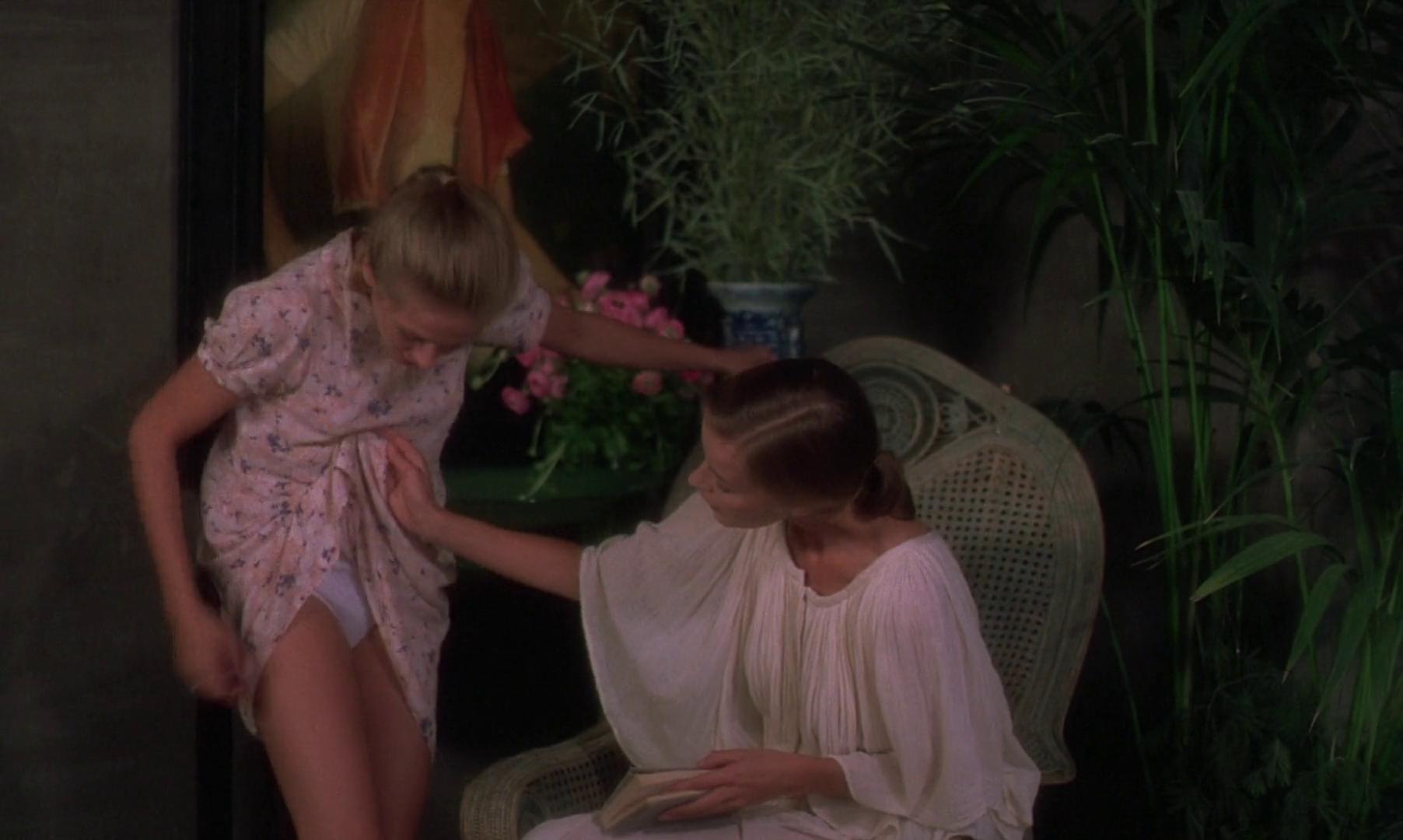
There are films you watch, and then there are films that slip beneath your skin. Bilitis (1977) is the latter—a fever dream dressed in soft light and scandalous stillness, whispering secrets you’re not sure you should be hearing.
Directed by the ever-controversial David Hamilton, a man known more for blurring the line between art and arousal than for tight plotting or narrative structure, this film isn’t about a story. It’s about a sensation. About atmosphere. About youth trembling on the edge of its own discovery. The screen becomes a mirror for private curiosities that rarely get spoken aloud.

We meet Bilitis, a boarding school girl sent to the countryside for the summer, seemingly innocent, all flowing dresses and doe-eyed glances. But innocence, as the film dares to suggest, is just a waiting room for desire. At the estate of Madame Melissa, Bilitis finds herself surrounded not by chaperones and safety, but by the scent of perfume, the hush of secrets, and a woman whose beauty is tinged with sadness. Melissa is both muse and mirror—elegant, broken, untouchable and yet irresistibly close. Her every gesture is a silent invitation, and Bilitis answers, not with rebellion, but with longing.
Their connection is unspoken, made of glances and gestures. But oh, how powerful they are. The way Bilitis observes Melissa dressing, bathing, smoking—it’s more revealing than any explicit scene. And David Hamilton knows it. He films the female body like a fragile sculpture, swathed in sunlight and silk, never vulgar but never shy either. The film’s eroticism is like warm honey—slow, sticky, inescapable.

But Hamilton doesn’t stop at suggestion. As Bilitis begins to explore the boundaries of her own attraction, she steps into more dangerous territory. A local man, with sun-browned skin and careless masculinity, becomes the object of her projected desires. Not love. Not even lust. Curiosity, performance, control—she wants to test the power that Melissa wields so effortlessly. But power is a dangerous game, especially when one doesn’t fully understand the rules.
Throughout the film, there’s almost no traditional dialogue. The silence speaks louder. What is said, is whispered. What is felt, is shown—through soft-lit cinematography, windblown curtains, parted lips, hands brushing over shoulders, bare skin shimmering under golden dusk. This is a film where the frame itself is aroused.

Yet Bilitis is not a celebration of liberation—it’s a lament. It captures that fleeting, aching moment when a girl realizes that her desires are real, but the world will punish her for them. The sensuality is laced with melancholy. The beauty is a trap. And no one escapes untouched.
Is Bilitis exploitation? Is it art? The answer is: yes. And no. And both. The film refuses to be pinned down by moral judgment. It simply exists, like a forbidden diary written in light and skin, left open on a sunlit bed.
One thing is certain—once you’ve entered Bilitis’s world, you won’t be the same when you leave.





